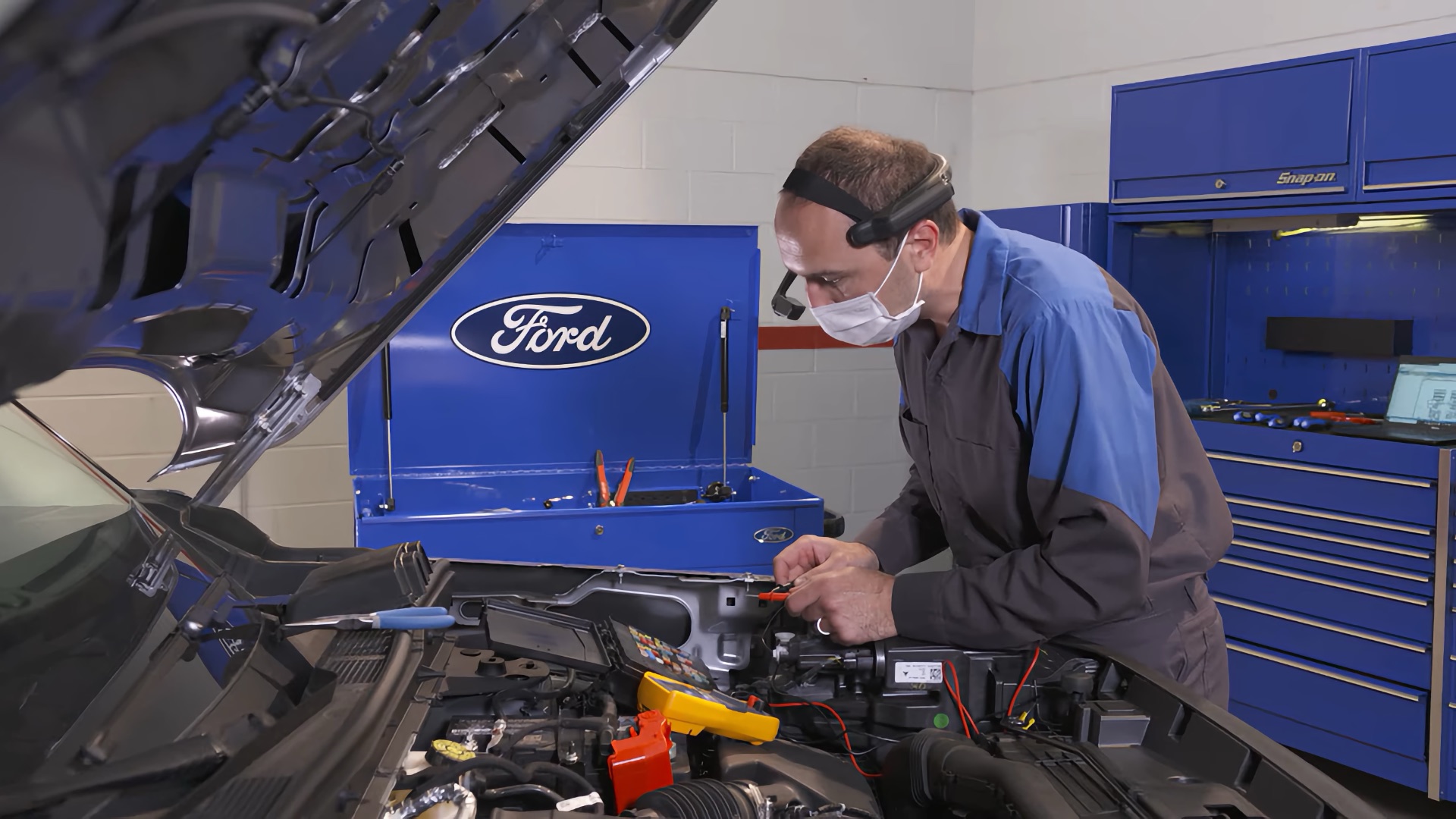Ford dealerships across the USA can now access remote viewing technology that allows repair technicians to receive real-time assistance from the Ford Technical Assistance Center (TAC) in Dearborn, Michigan.
According to Ford, the two-way, hands-free electronic headset, known as See What I See (SWIS), allows for visual and audio communication between dealership technicians and team members at the TAC.
The remote assistance software allows the technical assistance team to see what the dealership sees in real time while they work on the vehicle. SWIS’ augmented reality (AR) capability allows TAC team members to display modified or enhanced images on the headset for dealer technicians to view.
“The remote technology is designed to assist the technicians as they’re working on vehicles, with the goal of increasing efficiency and decreasing downtime for customers,” said David Green, Ford General Service Equipment Program Specialist. “This technology modernises and simplifies our operations, benefiting everyone involved.
“We had one case where a technician reported the vehicle would not recognise the low tyre pressure sensors. When the tech contacted the hotline using SWIS, they quickly found out they were using the wrong tool when the tech held it up in front of the camera. Once the right tool was used, everything was programmed just the way it should.”
TAC’s team of around 150 technicians receives about 5000 calls from dealership technicians across the US each week. Of those, around 200 cannot be diagnosed by phone, meaning field agents must be sent to examine the issue in person.
“SWIS definitely helps get our customers back on the road more quickly,” said Susan Padro, Service Manager at Mullinax Ford in Apopka, Florida. “We’ve had some wiring situations that we were able to fix in a few hours versus a few days using See What I See and that’s really valuable.”
Ford has activated 1200 headsets, with more than 350 SWIS calls to TAC received in 90 days. The company said all US-based dealers should have SWIS in their toolbox by November of this year.
Currently, SWIS is for diagnostic assistance, but designers are working to enhance the headsets to add more specific cases, such as HVAC concerns.
Other uses include:
- Gaining approval to replace a windshield by instantly sending pictures of the defect.
- Fleet operators using the headset to assist technicians with certain electric vehicle repairs instead of sending an engineer, allowing faster repairs and travel cost savings.
- Remote training to avoid having to attend a distant training centre.

